Audits
- Home
- Audits
Occupational Health and Safety Audits
Ensuring a Safe and Healthy Workplace

mportance of Occupational Health and Safety Audits
Risk Identification
OHS audits help in identifying workplace hazards that could lead to accidents or health issues.
Regulatory Compliance
Regular audits ensure that your organization complies with local and national health and safety regulations.
Employee Well-being
A safe workplace promotes employee morale, productivity, and overall well-being.
What We Offer
Comprehensive Assessments
Our audits include a thorough evaluation of your workplace, focusing on physical, chemical, biological, and ergonomic hazards.
Detailed Reporting
We provide a comprehensive report detailing our findings, including identified risks and areas for improvement.
Actionable Recommendations
Based on our assessments, we offer practical solutions to mitigate risks and enhance workplace safety.
Key Components of Our Audits
Workplace Inspections
We conduct detailed inspections of your facilities to identify potential hazards and unsafe practices.
Review of Safety Policies
Our team evaluates your existing health and safety policies to ensure they are effective and compliant with current regulations.
Employee Training Assessment
We assess the effectiveness of your employee training programs related to health and safety practices.
Benefits of Regular OHS Audits
Improved Safety Culture
Regular audits foster a culture of safety within your organization, encouraging employees to prioritize health and safety.
Reduced Incidents
Identifying and addressing hazards proactively can significantly reduce workplace accidents and injuries.
Legal Protection
Compliance with health and safety regulations protects your organization from potential legal liabilities and penalties.
Get Started Today
Ensure the safety and well-being of your employees by scheduling an Occupational Health and Safety audit with us. Our team of experienced professionals is dedicated to helping you create a safer workplace. Contact us today to learn more about our services and how we can assist you in achieving your health and safety goals.
Fire Safety Audits
Introduction to Fire Safety Audits
Fire safety audits are critical assessments designed to evaluate the effectiveness of fire safety measures in a facility. These audits help identify potential fire hazards, ensure compliance with local fire codes and regulations, and promote a culture of safety within the organization. Regular fire safety audits are essential for protecting lives, property, and the environment.
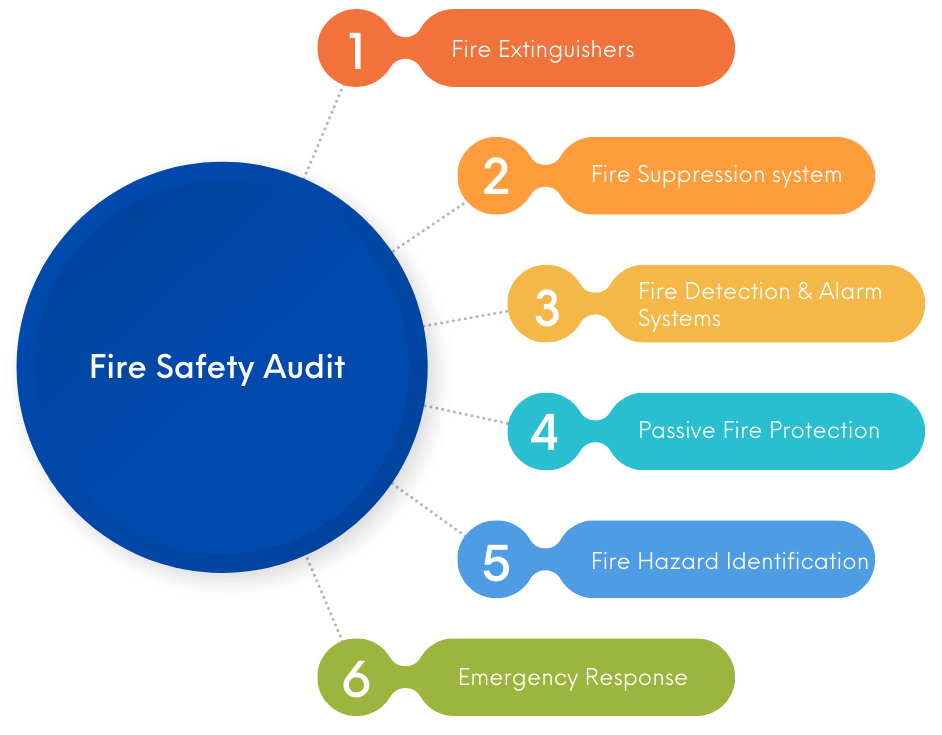
Importance of Fire Safety Audits
Risk Identification
Fire safety audits help identify potential fire hazards and vulnerabilities in your facility.
Regulatory Compliance
Ensure compliance with local, state, and national fire safety regulations, such as the National Fire Protection Association (NFPA) standards.
Employee Well-being
Evaluate and improve emergency response plans, ensuring that staff are prepared for fire emergencies.
Insurance Benefits
Regular audits can lead to lower insurance premiums by demonstrating a commitment to fire safety.
Peace of Mind
Knowing that your facility is safe from fire hazards provides peace of mind for employees, customers, and stakeholders.
What We Offer
Comprehensive Assessments
Our audits include a thorough evaluation of your workplace, focusing on physical, chemical, biological, and ergonomic hazards.
Detailed Reporting
We provide a comprehensive report detailing our findings, including identified risks and areas for improvement.
Actionable Recommendations
Based on our assessments, we offer practical solutions to mitigate risks and enhance workplace safety.
Key Components of a Fire Safety Audit
Fire Risk Assessment
Identify potential fire hazards, including flammable materials, electrical equipment, and ignition sources.
Fire Safety Equipment Inspection
Evaluate the condition and accessibility of fire safety equipment, such as fire extinguishers, alarms, and sprinkler systems.
Emergency Exits and Evacuation Routes
Assess the adequacy and visibility of emergency exits and evacuation routes, ensuring they are clear and well-marked.
Fire Safety Training
Review the training programs in place for employees regarding fire safety procedures, evacuation plans, and the use of fire extinguishers.
Fire Safety Signage
Ensure that appropriate fire safety signage is displayed throughout the facility, including exit signs and fire extinguisher locations.
Maintenance Records
Review maintenance records for fire safety equipment to ensure regular inspections and servicing are conducted.
Fire Safety Policies and Procedures
Evaluate existing fire safety policies and procedures to ensure they are up-to-date and effectively communicated to all staff.
Audit Process Overview
Kickoff Meeting
A brief meeting to outline the audit process and objectives.
Document Review
Examination of existing fire safety policies, training records, and maintenance logs.
Site Inspection
A thorough walkthrough of the facility to identify hazards and assess fire safety measures.
Interviews
Discussions with key personnel to gauge their understanding of fire safety protocols and procedures.
Closing Meeting
Presentation of findings, recommendations, and an action plan for improvement.
Continuous Improvement and Updates
Regularly update fire safety audit procedures to align with changes in regulations and best practices.
Implement a system for tracking and addressing identified issues to ensure continuous improvement in fire safety.
Foster a culture of safety by encouraging employee participation in fire safety training and drills.
Get Started with Your Fire Safety Audit
Contact us today to schedule your comprehensive fire safety audit.
Join the many organizations that have enhanced their fire safety practices and ensured compliance through our expert services.
Fire risk assessment
Fire risk assessment audits are essential for identifying potential hazards and ensuring compliance with safety regulations. Our comprehensive audits evaluate your premises, assess fire risks, and provide actionable recommendations to enhance safety measures, protecting lives and property from fire threats. Importance of Fire Risk Assessment Audits
Fire risk assessment audits are crucial for identifying potential fire hazards within your premises.
They ensure compliance with local fire safety regulations and standards.
Regular audits help in maintaining a safe environment for employees, tenants, and visitors.
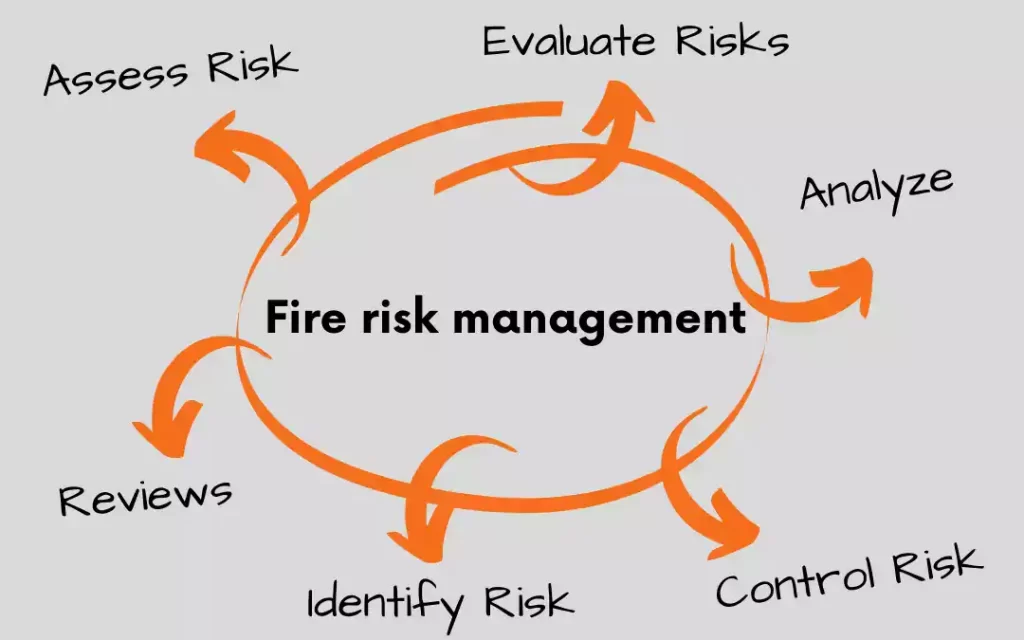
What We Offer
Comprehensive Evaluation
Our audits include a thorough examination of your property, identifying risks associated with fire safety.
Detailed Reporting
We provide a clear and concise report outlining the findings of the audit, including identified risks and areas for improvement.
Actionable Recommendations
Based on the audit results, we offer practical recommendations to mitigate risks and enhance fire safety measures.
Key Components of Our Audits
Inspection of Fire Safety Equipment
We check the functionality and accessibility of fire alarms, extinguishers, and emergency lighting.
Assessment of Escape Routes
Our team evaluates the adequacy of escape routes and emergency exits, ensuring they are clear and well-marked.
Review of Fire Safety Policies
We analyze existing fire safety policies and procedures to ensure they are up-to-date and effective.
Benefits of Regular Audits
Enhanced Safety
Regular audits significantly reduce the risk of fire incidents by identifying and addressing potential hazards.
Legal Compliance
Staying compliant with fire safety regulations protects your organization from legal liabilities and penalties.
Peace of Mind
Knowing that your premises have been thoroughly assessed provides reassurance to employees and stakeholders.
Get Started Today
Fire Fighting Hydrants
Introduction to Fire Fighting Hydrants
Fire fighting hydrants are critical components of a building’s fire protection system, providing a reliable water supply for fire suppression efforts. Properly installed and maintained hydrants ensure that firefighters can quickly access water during emergencies, significantly enhancing the effectiveness of fire response operations. Regular inspections and maintenance of fire hydrants are essential for ensuring their functionality and compliance with safety standards.
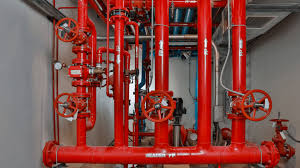
Importance of Fire Fighting Hydrants
Types of Hydrants
Wet Barrel Hydrants: Commonly used in warmer climates, these hydrants have water in the barrel at all times.
Dry Barrel Hydrants: Used in colder climates, these hydrants are designed to drain water from the barrel to prevent freezing.
Hydrant Components
Nozzle: The outlet where firefighters connect hoses to draw water.
Valve: Controls the flow of water from the hydrant.
Barrel: The main body of the hydrant that houses the valve and nozzle.
Cap: Covers the nozzle when not in use, preventing debris from entering.
Hydrant Markings
Proper markings indicate the hydrant's water flow capacity, ensuring firefighters can quickly assess available resources.
Inspection and Maintenance
Regular Inspections: Conduct routine inspections to ensure hydrants are accessible, visible, and in good working condition.
Flow Testing: Perform flow tests to measure the water supply and ensure it meets fire department requirements.
Lubrication: Regularly lubricate moving parts to prevent corrosion and ensure smooth operation.
Repairs and Replacements: Address any identified issues promptly, including leaks, rust, or damaged components.
Audit Process Overview
Kickoff Meeting
A brief meeting to outline the audit process and objectives related to fire hydrants.
Document Review:
Examination of existing maintenance records, inspection reports, and compliance documentation.
Site Inspection
A thorough walkthrough to assess the condition and accessibility of fire hydrants.
Interviews
Discussions with facility management and fire safety personnel to gauge their understanding of hydrant maintenance protocols.
Closing Meeting
Presentation of findings, recommendations, and an action plan for improvement.
Continuous Improvement and Updates
Regularly update hydrant inspection and maintenance procedures to align with changes in regulations and best practices.
Implement a tracking system for maintenance activities and inspections to ensure compliance and accountability.
Foster a culture of safety by training staff on the importance of hydrant maintenance and emergency response procedures.
Get Started with Your Fire Fighting Hydrant Assessment
Contact us today to schedule your comprehensive fire fighting hydrant assessment and ensure compliance with safety standards.
Join the many organizations that have enhanced their fire safety practices through our expert services.
Fire Fighting Consultation
Introduction to Fire Fighting Consultation
Fire fighting consultation services are essential for organizations seeking to enhance their fire safety measures and ensure effective emergency response strategies. Our expert consultants provide tailored advice and solutions to help you navigate the complexities of fire safety regulations, design effective fire fighting systems, and develop comprehensive emergency response plans.
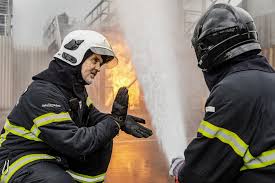
Importance of Fire Fighting Consultation
Expert Guidance
Access to knowledgeable professionals who understand fire safety regulations, best practices, and the latest technologies.
Risk Assessment
Identify potential fire hazards and vulnerabilities within your facility, allowing for proactive measures to mitigate risks.
Regulatory Compliance
Ensure compliance with local fire codes and national standards, reducing the risk of penalties and enhancing safety.
Customized Solutions
Tailored fire fighting strategies that meet the unique needs of your organization and facility.
Training and Preparedness
Equip your staff with the knowledge and skills necessary to respond effectively in the event of a fire.
Key Services Offered
Fire Safety Audits
Comprehensive evaluations of your facility’s fire safety measures, identifying areas for improvement and compliance gaps.
Fire Fighting System Design
Expert advice on the design and installation of fire fighting systems, including sprinklers, hydrants, and extinguishers, tailored to your building’s layout and occupancy.
Emergency Response Planning
Development of customized emergency response plans that outline procedures for evacuation, communication, and coordination with local fire services.
Training Programs
Conduct training sessions for staff on fire safety protocols, the use of fire fighting equipment, and emergency response procedures.
Regulatory Compliance Consulting
Assistance in navigating local and national fire safety regulations, ensuring your organization meets all legal requirements.
Fire Risk Assessment
Detailed assessments to identify potential fire hazards and recommend mitigation strategies to enhance safety.
Consultation Process Overview
Initial Consultation
A meeting to discuss your specific needs, concerns, and objectives regarding fire safety.
Site Assessment
A thorough evaluation of your facility to identify fire hazards, assess existing fire safety measures, and understand the layout.
Report and Recommendations
A detailed report outlining findings, recommendations for improvements, and a prioritized action plan.
Implementation Support
Assistance in implementing recommended changes, including system design, installation oversight, and staff training.
Follow-Up and Review
Regular follow-up consultations to assess the effectiveness of implemented measures and make necessary adjustments.
Continuous Improvement and Updates
Stay informed about changes in fire safety regulations and best practices to ensure ongoing compliance and safety.
Regularly review and update emergency response plans and training programs to reflect any changes in your facility or operations.
Foster a culture of safety by encouraging staff participation in fire safety initiatives and ongoing training.
Get Started with Your Fire Fighting Consultation
Contact us today to schedule your fire fighting consultation and take the first step toward enhancing your fire safety measures.
Join the many organizations that have benefited from our expert fire fighting consultation services, ensuring a safer environment for all.
Electrical safety audits
Electrical safety audits are essential for identifying potential hazards and ensuring compliance with safety standards. These audits assess electrical systems, equipment, and practices to mitigate risks, enhance safety, and protect lives. Regular audits help maintain a safe working environment and prevent electrical accidents. Importance of Electrical Safety Audits
Electrical safety audits are crucial for identifying and mitigating potential hazards in electrical systems.
They ensure compliance with safety regulations and standards, such as OSHA and NFPA 70E.
Regular audits help in maintaining a safe working environment, reducing the risk of electrical accidents and injuries.
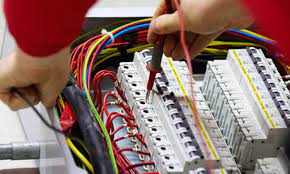
Key Components of an Electrical Safety Audit
Training and Knowledge Assessment
Evaluate the level of electrical safety knowledge among personnel through interviews and training assessments.
Electrical Qualification Process
Review the task-qualification process to ensure that employees are adequately trained for their specific roles.
Personal Protective Equipment (PPE)
Assess the selection and proper usage of PPE to protect workers from electrical hazards. Shock Hazard Awareness
Shock Hazard Awareness
Understand and apply safety rules to prevent shock hazards, including knowledge of approach boundaries.
Arc Flash Hazard Awareness
Ensure proper labeling of equipment and understanding of arc flash tables for risk assessment.
Boundary Determination
Establish shock and arc flash boundaries and ensure proper setup to minimize risks. Use of Electrical Safety Tools
Use of Electrical Safety Tools
Evaluate the availability and proper use of safety tools, such as insulating blankets and voltage-rated tools.
Personnel and Program Auditing
Conduct audits of personnel and safety programs as required by regulations or site policies.
Audit Process Overview
Kickoff Meeting
30 minutes to outline the audit process.
Document Review:
30 to 90 minutes, depending on the number of employees and equipment.
Site Inspection
30 to 60 minutes based on the complexity of the site.
Interviews
30 to 90 minutes with qualified personnel to assess knowledge and practices.
Closing Meeting
30 minutes to discuss findings and recommendations.
Continuous Improvement and Updates
Regularly review and update audit procedures to align with changes in industry standards and regulations.
Implement a trend analysis based on previous audits to identify areas for improvement and track progress.
Aim for a zero-electrical-injury work environment by addressing unsafe behaviors and enhancing safety practices.
Get Started with Your Electrical Safety Audit
Contact us to schedule your electrical safety audit and ensure compliance with safety standards.
Join numerous satisfied clients who have improved their electrical safety practices through our expert services.
Building Safety Audits
Introduction to Building Safety Audits
Building safety audits are systematic evaluations of a building’s safety features, compliance with regulations, and overall risk management. These audits are essential for identifying potential hazards, ensuring the safety of occupants, and maintaining compliance with local building codes and safety standards. Regular building safety audits help create a secure environment for all users of the facility.

Importance of Building Safety Audits
Hazard Identification
Building safety audits help identify structural, fire, electrical, and other hazards that could pose risks to occupants.
Regulatory Compliance
Ensure compliance with local, state, and national building codes and safety regulations, including the National Building Code (NBC).
Occupant Safety
Protect the health and safety of occupants by identifying and mitigating risks associated with the building's design and maintenance.
Insurance Benefits
Regular audits can lead to lower insurance premiums by demonstrating a commitment to safety and risk management.
Peace of Mind:
Knowing that your building meets safety standards provides peace of mind for owners, tenants, and visitors.
Key Components of a Building Safety Audit
Structural Integrity Assessment
Evaluate the building's structural components, including foundations, walls, and roofs, to identify any signs of deterioration or damage.
Fire Safety Evaluation
Assess fire safety measures, including fire alarms, extinguishers, emergency exits, and evacuation plans, to ensure compliance with fire safety regulations.
Electrical Safety Inspection
Review electrical systems and equipment for compliance with safety standards, identifying potential hazards such as overloaded circuits or outdated wiring.
Accessibility Compliance
Ensure that the building meets accessibility standards, such as the Americans with Disabilities Act (ADA), to accommodate all occupants.
HVAC and Indoor Air Quality Assessment
Evaluate heating, ventilation, and air conditioning systems to ensure they are functioning properly and providing adequate indoor air quality.
Plumbing and Sanitation Review
Inspect plumbing systems for leaks, proper drainage, and compliance with health and safety standards.
Emergency Preparedness
Review emergency response plans, including evacuation procedures and communication protocols, to ensure readiness in case of an emergency.
Audit Process Overview
Kickoff Meeting
A brief meeting to outline the audit process, objectives, and expectations.
Document Review
Examination of existing building plans, maintenance records, and safety policies.
Site Inspection
A thorough walkthrough of the building to identify hazards and assess safety measures.
Interviews
Discussions with building management and staff to gauge their understanding of safety protocols and procedures.
Closing Meeting:
Presentation of findings, recommendations, and an action plan for improvement.
Continuous Improvement and Updates
Regularly update building safety audit procedures to align with changes in regulations and best practices.
Implement a system for tracking and addressing identified issues to ensure continuous improvement in building safety.
Foster a culture of safety by encouraging occupant participation in safety training and drills.
Get Started with Your Building Safety Audit
Contact us today to schedule your comprehensive building safety audit.
Join the many organizations that have enhanced their building safety practices and ensured compliance through our expert services.
